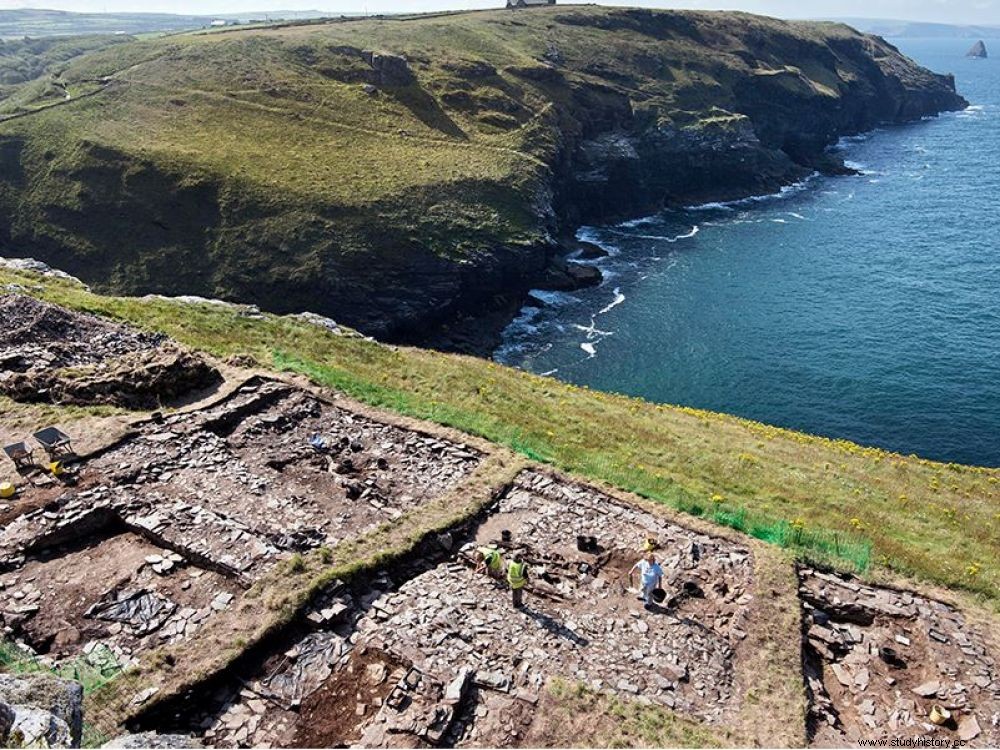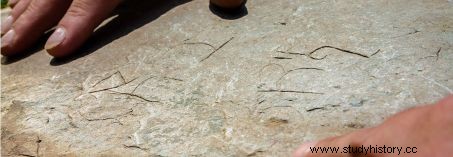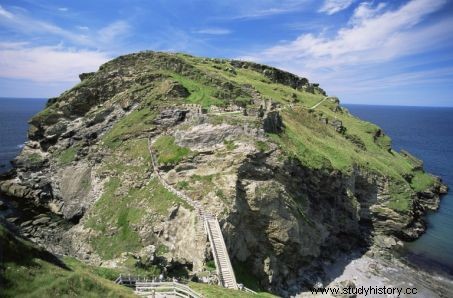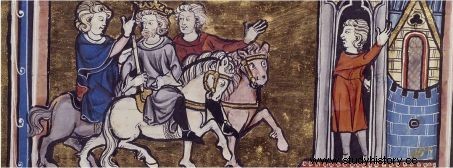An enigmatic mixture of engraved words and symbols from the 7th century century have been unearthed at Tintagel, a Cornish site associated with the legend of King Arthur.

Archaeological excavations of the site of Tintagel, in Cornwall (United Kingdom)
It is a 61cm wide slate slab dated from the VII th century incised with mysterious writings mixing Latin, Greek characters and Christian symbols, unearthed by British archaeologists at the famous site of Tintagel, on the north coast of Cornwall (United Kingdom). Admittedly, this is not the first time such stones have been encountered since the Historic Buildings and Monuments Commission for England (English Heritage ) and the Cornish Archaeological Unit (CAU) are studying the medieval ruins standing on this fantastic rocky outcrop. But each discovery is an event as the place is symbolic. In 1998, the identification of the Celtic term "Artognou on one of these blocks, had it attached a little hastily to the name of King Arthur! Tintagel has indeed been linked to the fabulous hero since the twelfth century. century:"This peninsula of great wild beauty, battered by the winds as much as by the waves, was linked by literary accounts as early as 1135, to the place where King Arthur is said to have been conceived “, explains Alban Gautier, specialist in English medieval history at the University of Caen (Calvados).
A thousand-year-old inscription mixing various scripts, discovered at Tintagel (United Kingdom), a site associated with the Arthurian legend. ©English Heritage
According to The Guardian newspaper , which relays the find, the slab of slate extracted during the summer of 2017 - but whose existence archaeologists have just revealed - would contain "the Roman and Celtic names 'Tito' and 'Budic' , "the Latin words fili (son or son) and viri duo (two men )" as well as other signs, which experts link to a community living on the mainland, on the immediate outskirts of the fortress. "The castle of e Tintagel was erected on this mythological site in the 13th th century, by Richard of Cornwall, brother of Henry III, King of England “, explains the historian.
The Tintagel peninsula and the ruins of the 13th century medieval castle century. ©Eurasia Press/Photononstop/AFP
However, the occupation of the village adjoining the peninsula is much earlier since vestiges dating from the 5th th -VII e century were exhumed at the beginning of the XX th century, including "des prestige items, like tableware in red sigillata or ceramics from present-day Turkey, North Africa, the Carthage region or even Gaza », continues Alban Gautier. At this time, the princes who controlled the site were importing - via trade routes that predated the conquest of Britain by the Romans in the 1 st century - Mediterranean products such as olive oil, wine and cured fish. But this trade was interrupted around 600. It was then replaced by trade with the Atlantic coast, the Iberian Peninsula and Aquitaine "against tin Cornish “, continues the historian. A luxurious way of life which was therefore maintained for these populations of the west of England for at least 200 years after the end of the Roman presence (V e century).
In the ruins of Tintagel Castle. ©English Heritage
Geographical backyard of the Roman West, Christianity and its symbols arrived in Cornwall in the 5th century. century, "another way, with this religion becoming imperial in the 4th century, of finally continuing, with its use of Latin, to assert itself as heirs of Rome “, says Alban Gautier.
In England, traces of writing dating from this period are rare. To date, the only known manuscript work surviving between 400 and 600 is Treatise on the Fall of Britain , of the monk Gildas. A sermon in which the religious exhorts his contemporaries to behave in a virtuous manner. “Apart from this sermon, over these crucial 200 years, there is almost nothing as written sources, hence the inestimable value of these found engraved stones “says Alban Gautier. “In Tintagel, there is always the hidden hope of one day being able to identify the names of the princes who lived there between the V th century and the VII th century »…
Arrival of Uther Pendragon and Arthur at Tintagel. © BNF
King Arthur
At the turn of the XII
th
century, ancient texts tell that King Arthur would have been conceived in the almost-island of Tintagel, thanks to the magic of Merlin. His father Uther Pendragon would then have been transformed by the powers of the enchanter, to take on the appearance of the Duke of Tintagel, the Duke of Cornwall, in order to go and join the latter's wife and father Arthur. The first text in which we find this evocation is, around 1135, The History of the Kings of Brittany of the Welshman Geoffrey of Monmouth. Undoubtedly the author at the origin of the legend of King Arthur. “This Anglo-Norman bishop collected and brought together stories that existed scattered throughout the west of Britain, and made them into something new, and on a much larger scale ". Geoffrey of Monmouth did not invent Arthur, but he built a coherent and attractive account of it. With the immense success that we know.




